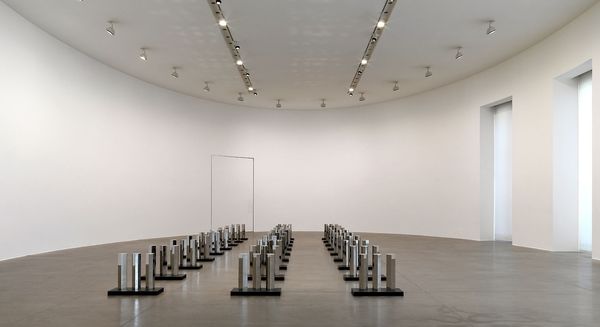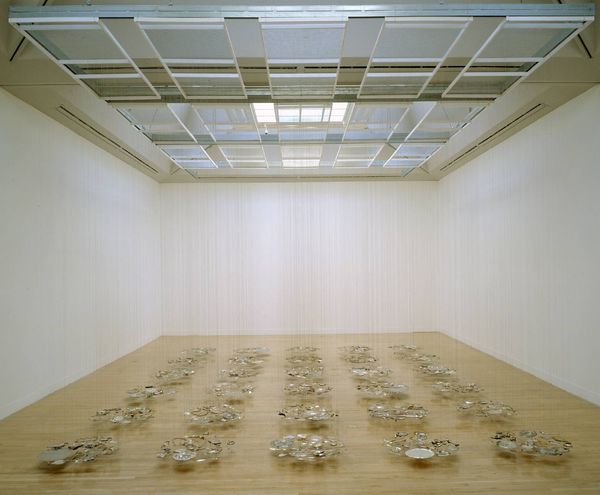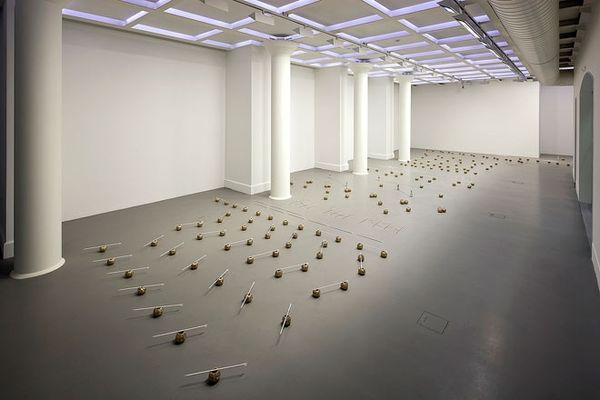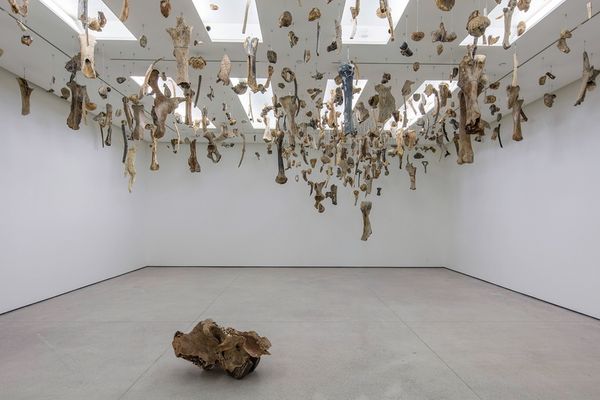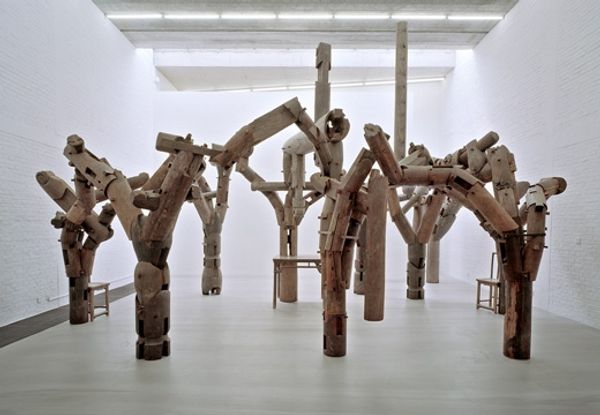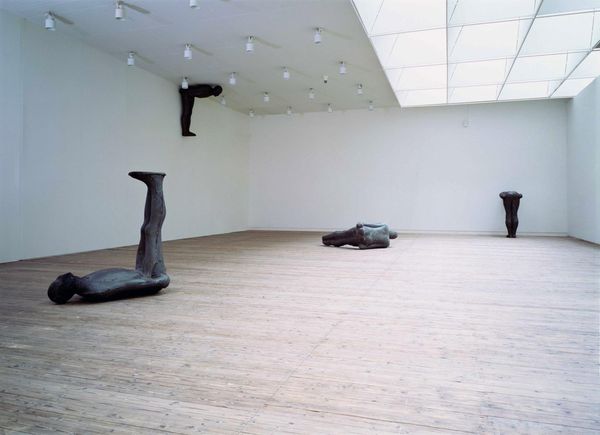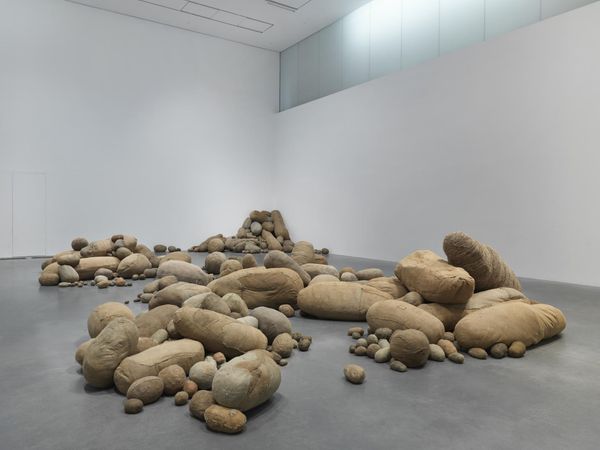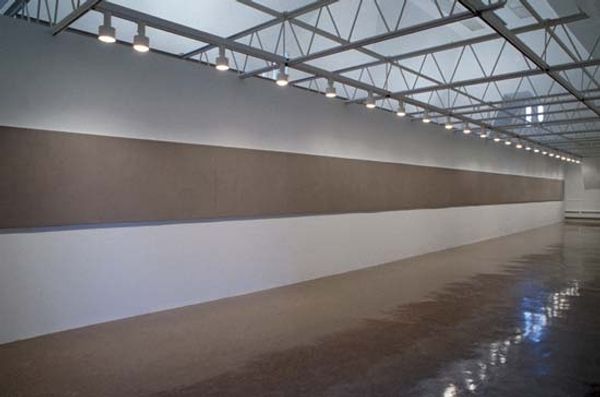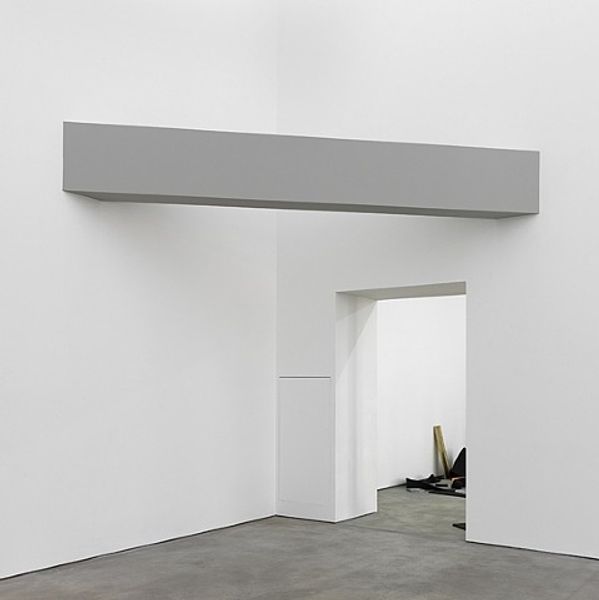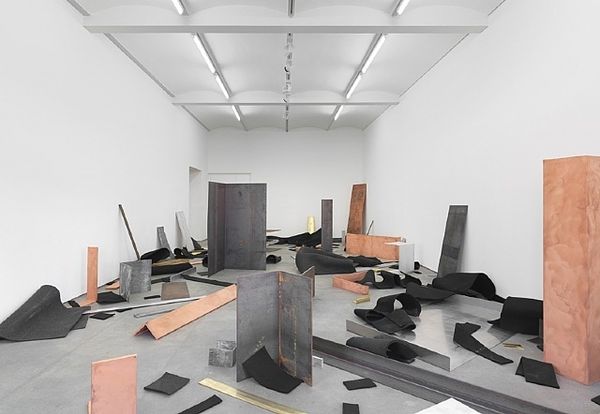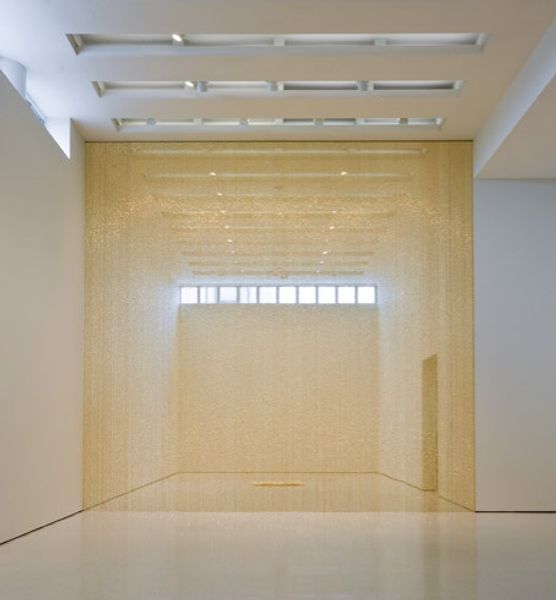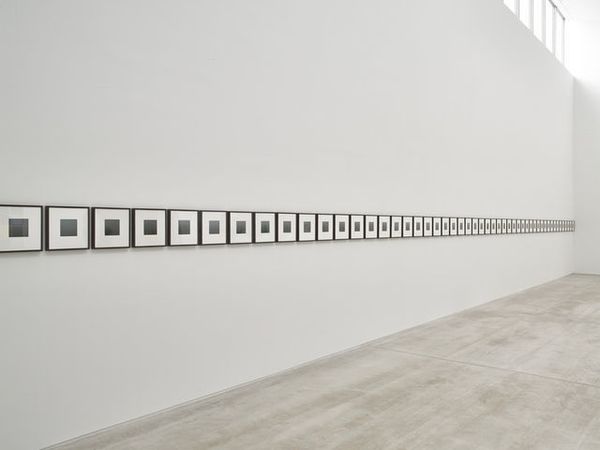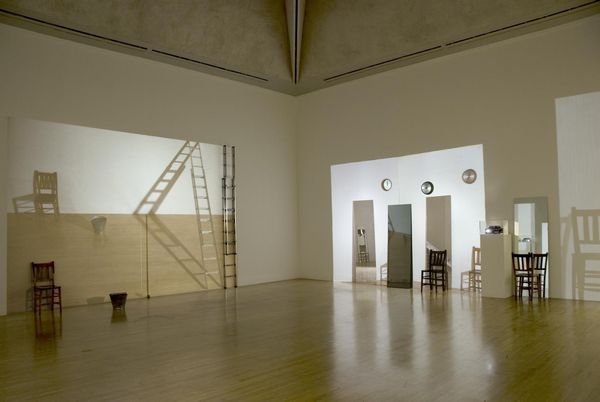
Copyright: Kishio Suga,Fair Use
Editor: This is Kishio Suga's "Law of Multitude" from 2012, a mixed-media installation featuring a clear plastic sheet and rocks, laid out across the gallery floor. The rocks scattered on the plastic feel very grounded and permanent, juxtaposed with the fragility of the plastic. It’s oddly serene, like a minimalist Zen garden. What do you make of it? Curator: It’s crucial to see Suga's work within the context of Mono-ha, the Japanese art movement of the late 1960s and early 1970s. The materials are presented “as is,” and that’s a political act. There’s an implicit rejection of Western ideals of imposed artistic form; the artist coexists with the materials, almost disappears. Editor: So the artist's lack of overt intervention is significant? Curator: Exactly. The 'law of multitude’ perhaps points to a decentralized structure. The arrangement challenges traditional art hierarchies. Think about the socio-political climate in Japan at the time – student protests, questioning authority. Do you see a connection there? Editor: I hadn’t considered it, but the individual rocks refusing to be anything but themselves – not subservient to a larger form - now, it does resonate. And placing them in a gallery – a space of authority – is provocative. Curator: The gallery becomes a space for reflection on those social forces, right? It shifts the viewer's understanding, inviting them to participate in constructing meaning, rather than passively receiving it. Editor: I’m starting to understand how the choice and arrangement of materials become a powerful form of commentary in themselves. Curator: Indeed, this redefines our expectations and prompts examination of structures shaping our understanding. Hopefully this sheds some light on Kishio Suga’s work and artistic intentions! Editor: Absolutely. This was such a thoughtful exercise in uncovering the hidden layers in Kishio Suga’s art!
Comments
No comments
Be the first to comment and join the conversation on the ultimate creative platform.
